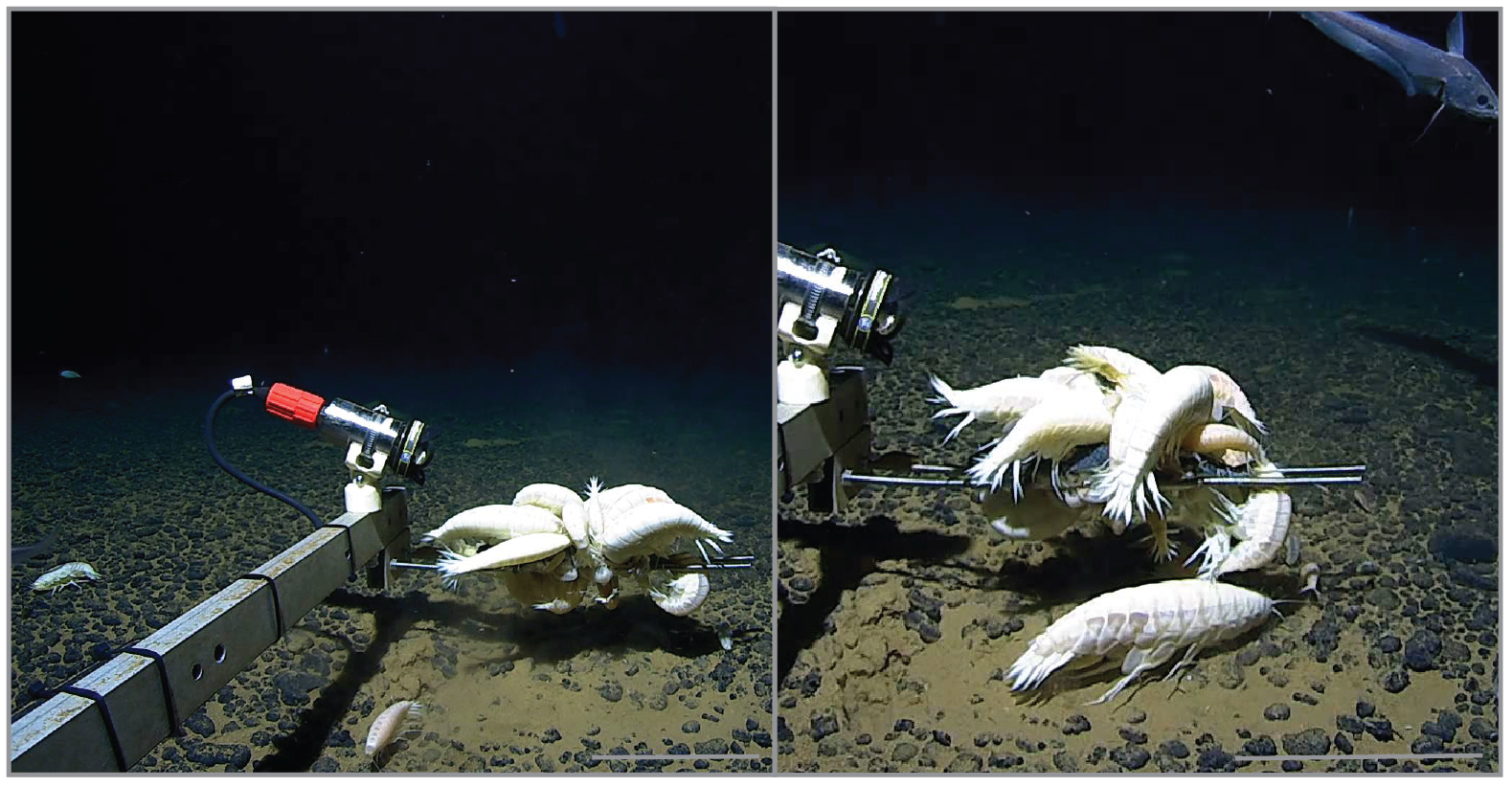Rarely seen ‘supergiant’ deep-sea cousin of woodlice is actually quite common, study finds
Crustacean may inhabit 59 per cent of world's oceans
A rarely spotted “supergiant” crustacean related to woodlice is actually a common inhabitant of the sea floor, a new study finds.
The deep-sea creature, Alicella gigantea, which can grow up to 34cm long, is the largest-known species of the amphipods.
Amphipod is among the most diverse group of crustaceans, with over 10,000 extant species, including woodlice, shrimps, and lobsters. Amphipods are known to inhabit all aquatic environments worldwide.
Alicella gigantea, commonly known as the “supergiant amphipod”, has long attracted attention due to its gigantism. It was first filmed in the 1970s at a depth of over 5,300m in the North Pacific but no records of the species were made for nearly two decades after, signifying low population densities.
Infrequent sightings only served to buttress the belief that the giant crustacean was rare.
There have been only seven studies so far detailing the DNA sequence data of the species.

The latest study, published in the journal Royal Society Open Science, analyses nearly 200 records of Alicella gigantea from 75 locations on the seabed, spanning the Pacific, Atlantic and Indian Oceans.
Researchers from the University of Western Australia now suggest the species may well be inhabiting over half the world’s deep oceans.
The study notes the crustacean thrives at extreme depths in 59 per cent of the world's oceans, indicating that it is far more widespread than previously thought.
The research examines 195 records of the supergiant species, including genetic data from mitochondrial and nuclear DNA, from 75 locations worldwide to map its distribution and evolutionary history.
It concludes that while the creature is rarely collected, it is “remarkably widespread”.
“There is an ever-growing body of evidence to show that A gigantea should be considered far from rare,” the research says.
Although the crustacean’s population density may be relatively low compared to other deep-sea amphipods, it inhabits an extraordinarily large geographical range, researchers say.
“Our results show that this species may occupy around 59 per cent of the world’s oceans, indicating that the infrequently collected supergiant isn’t ‘rare’ but instead represents a widely distributed deep-sea amphipod with an exceptional global range,” they write.
The findings also point to insufficient research of creatures inhabiting the ocean at depths greater than 5,000m. This is in line with another recent study finding that humans have observed less than 0.001 per cent of the deep seafloor.
“We need a much better understanding of the deep ocean's ecosystems and processes to make informed decisions about resource management and conservation,” study lead author and marine explorer Katy Croff Bell says.
Join our commenting forum
Join thought-provoking conversations, follow other Independent readers and see their replies
Comments